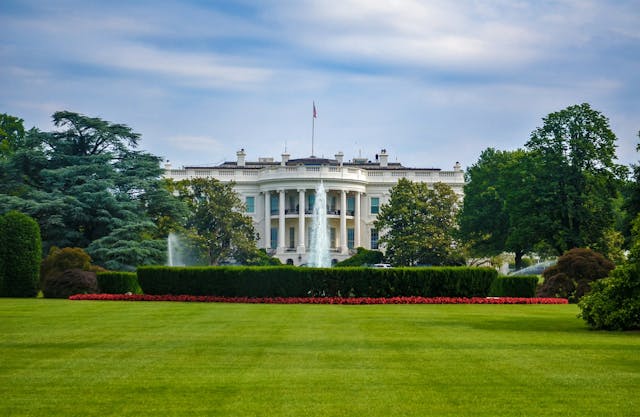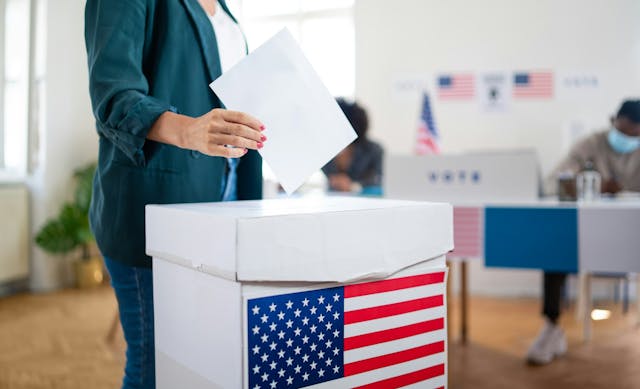The One Bill In Congress That Could End Gerrymandering for Good

Author: Fair Vote
The Gerrymandering Project at 538 has begun an interesting conversation by producing eight sets of national congressional maps, each with a distinct goal.
They demonstrate what maps would look like with a GOP or a Democratic lean, and then also zero in on other objectives often sought by mapmakers, such as compactness, competitiveness, maximizing majority-minority seats, or matching the likely statewide outcome to the state’s partisan breakdown.One of the great contributions of this giant effort is to show just how complicated a problem gerrymandering is to solve – and how some of the criteria mapmakers and reformers might use to combat it are themselves in conflict.But there is another way to defeat gerrymandering and the 538 maps do not address it all: Let’s do away with the very idea of single-member, winner-take-all districts. Our problem is less redistricting than the way we draw districts themselves.A bill is pending before the U.S. Congress that would do exactly that: The Fair Representation Act (HB 3057), introduced by Reps. Don Beyer and Ro Khanna, would dramatically increase competitiveness and fairness in our House elections. It uses three fundamental reforms: Ranked choice voting, larger multi-winner districts, and independent redistricting commissions to draw the lines.But when you move to larger districts and this type of election, suddenly the power that comes with surgically crafting precise districts with sophisticated map making software disappears.You can read more about it and check out our proposed maps here.ALSO READ: How the Fair Representation Act Would Empower Voters in the SouthwestWe’ll return to this topic at greater length with many other FairVote voices over the days and weeks to come. But here are some of the reasons why those of us concerned about the corrosive impact of gerrymandering on our democracy ought to take a serious look at this approach:If your goal is greater competition, this Fair Representation system would dramatically increase the number of competitive districts across the country and allow everyone the opportunity to vote in meaningful elections.If your goal is to reduce polarization, this system would reduce the oversized influence of partisan voters in low-turnout primaries, give moderate and independent voters more choices, and empower the broader electorate that turns out in November general elections.If your goal is to make Congress work again, this system would broaden the tent of both parties – the combination of ranked-choice voting and multi-member districts would elect Republicans from New England and Democrats from Kansas and Oklahoma.Right now, Massachusetts Republicans and Oklahoma Democrats go completely unrepresented in Congress. Members of that geographic and ideological persuasion would be valuable bridge-builders in a Congress that now has fewer and fewer “cross-over” representatives.If your goal is representation that is more accurate and proportional, this system would help end skewed outcomes. Not only would voters currently shut-out in states that send entirely red or blue delegations to Washington have the power to elect, but outcomes like 2012 – when one party one a majority of seats overall without the majority of votes – could be prevented.If your goal is more collaborative government, candidates could run as a slate and a team – and would need to talk to everyone and fight for important second- and third-choice votes.And if your goal is to elect more women and to add greater diversity to a Congress that does not look like America, the Fair Representation Act would not only create more opportunities for women to run and win, but would increase the number of seats where communities of color have the power to elect from around 70 today to more than 100.After checking out the 538 maps, I encourage to take a look at the ones produced by FairVote and join the conversation. Explore our projections, see our petition, and talk to your member of Congress. This is a moment when it has become clear that our democracy must be revitalized with genuine change.This is a big step – but it’s the one that really solves the problems gerrymandering opponents are looking to end.Editor's Note: This article, written by David Daley, originally published on FairVote's blog, and has been modified slightly for publication on IVN.
Latest articles
No Labels' Failed Presidential Math and Why It Should Focus Its Efforts on Reforming the System Instead
Earlier this month, No Labels officially ended its plans to field a bipartisan “Unity Ticket” in the 2024 presidential election. While most campaigns end due to a lack of voter support or funding, No Labels’s campaign suffered the unique problem of lacking a candidate....
26 April, 2024
-
6 min read
Pew: Half of US Voters Would Replace Trump AND Biden on the Ballot If Given Chance
US voters are largely unhappy with the options the two major parties have given them in the 2024 presidential election. While Hillary Clinton says these voters need to get over themselves, Pew Research has found that she is talking to most of the country....
25 April, 2024
-
2 min read
Breaking Down the Numbers: Independent Voter Suppression in Pennsylvania
Pennsylvania held its primary elections Tuesday, which effectively acted as the general election in most cases. However, statewide, over a million voters had to sit on the sidelines because of the state's closed primary rules....
24 April, 2024
-
3 min read


